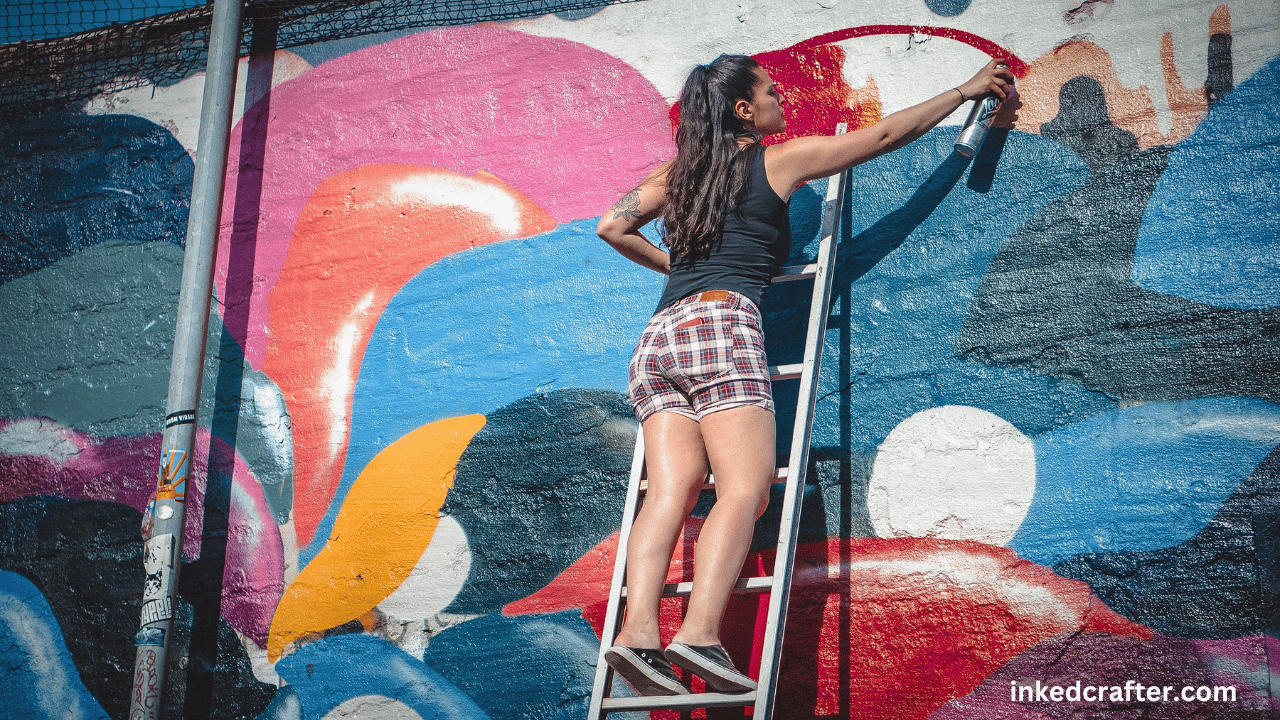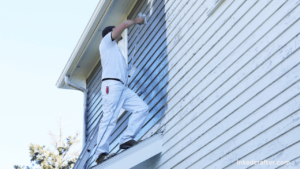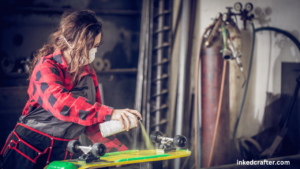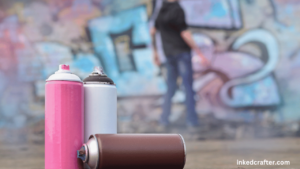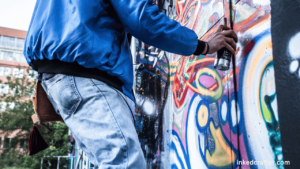Brick surfaces have a timeless allure; nevertheless, there are instances when you might want to give them a more modern appearance. Here comes the spray painting. However, hold on. Is it really possible to spray paint brick? Your response can take you by surprise. To find out, let’s dig into this guide suitable for beginners.

Contents
Familiarity with the Fundamentals
Would it be possible to spray paint brick? The answer is yes! However, before you get that can of paint, let’s familiarize ourselves with a few fundamentals. Brick is porous, which means that it contains minute holes that are capable of water absorption. This quality can impact how effectively the paint adheres to the surface and how long it remains effective.
The Surface is Being Prepared
You need to do some preparation work before you start spraying. Thoroughly cleaning the surface of the bricks will remove any dirt, filth, and loose mortar that may be present. To complete this work, you can either use a wire brush or a pressure washer. Please wait until the surface is totally dry after it has been cleaned.
In Search of the Appropriate Paint
There are a variety of paints available, but not all of them are intended for painting brick. It is important to look for excellent quality masonry or brick paint, has a permeable design, and is created primarily for external surfaces. The formulation of these paints allows them to stick nicely to brick and they are also resistant to the elements.
One, Two, Three, Testing, Testing
It is recommended that you perform a test patch before you commit to painting the entire surface. Take a small area and spray it with paint, then wait for it to dry to see how well it adheres and how it appears once it is done. This phase can help you adjust your approach or select a different paint, if necessary.
Putting on the Paint Coat
What’s next is the most enjoyable part: painting! While holding the can approximately 8 to 12 inches from the surface, give it a thorough shake. To ensure that the paint is completely covered, apply it in strokes that are even and smooth and slightly overlap each pass. To get a finish that appears to have been done by an expert, work in small portions and take your time.

The process of curing and sealing
After the paint has dried, it is time to allow it to cure. Depending on the type of paint you used, this could take anywhere from a few hours to a few days. If you want to protect the paint and make it last longer, you should consider using a masonry sealer once it has had time to cure.
Conclusion
Would it be possible to spray paint brick? Unquestionably! You are able to easily alter the appearance of your brick surfaces by using the appropriate preparation, paint, and technique. Simply keep in mind that you need to clean and prepare the surface.
Select the appropriate paint, perform a test patch, and apply the paint in an even manner. You are able to give your brick a new and updated appearance that will last for many years to come with only a small bit of effort.
FAQs
-
Can you spray paint brick indoors?
While technically possible, spraying indoors isn’t ideal due to fumes and overspray. If indoor spraying is necessary, ensure good ventilation and consider low-pressure sprayers.
-
How long does spray paint last on brick?
Quality paint on well-prepared brick can last several years, but longevity varies based on paint quality, surface prep, and exposure to elements.
-
Do I need to prime brick before painting?
Priming isn’t always necessary but aids adhesion, especially on uneven or porous surfaces. Use a masonry primer and follow instructions.
-
Can you paint over painted brick?
Yes, with proper prep. Clean thoroughly, sand glossy areas, and apply primer if needed for best results.
-
How do I remove spray paint from brick?
Removing spray paint requires specialized products. Use graffiti remover or masonry paint stripper, testing in a small area first.

